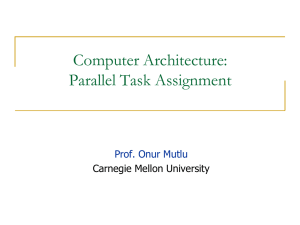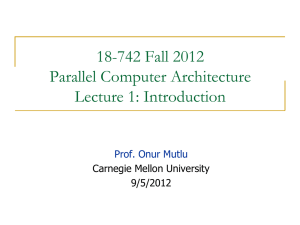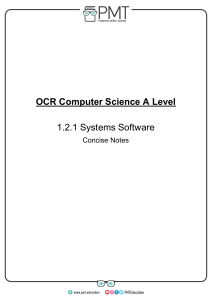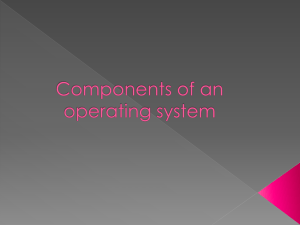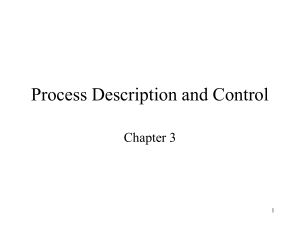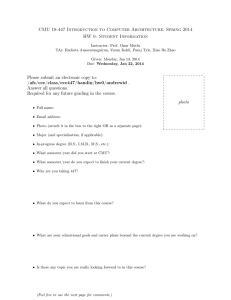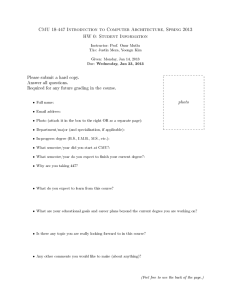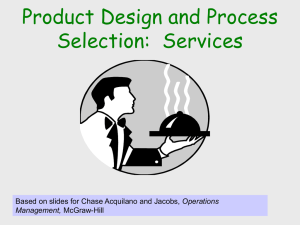18-742 Spring 2011 Parallel Computer Architecture Lecture 1: Introduction Prof. Onur Mutlu
advertisement
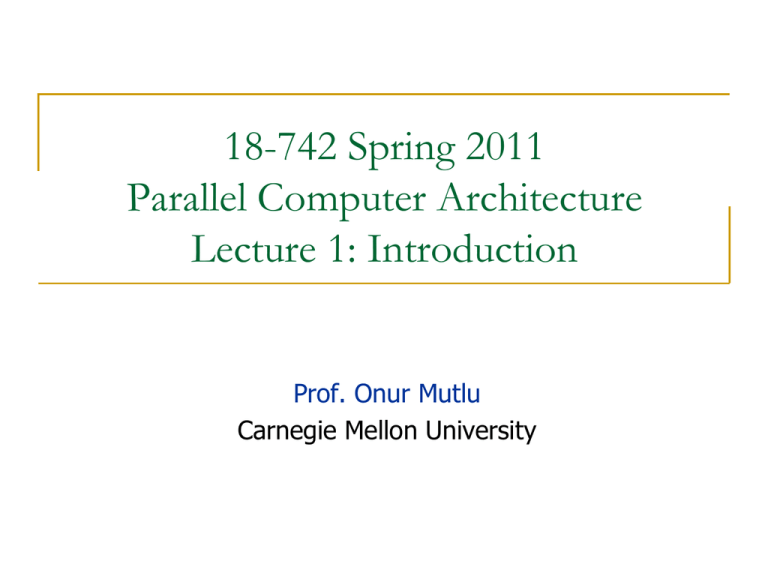
18-742 Spring 2011 Parallel Computer Architecture Lecture 1: Introduction Prof. Onur Mutlu Carnegie Mellon University Agenda Course logistics, info, requirements Who are we? Who should take this course? What will you learn? What will I expect? Policies Homework and reading for next time Some fundamental concepts 2 Quiz 0 (Student Info Sheet) Due at the end of class Our way of getting to know about you fast All grading predicated on passing Quiz 0 But, you are not in this room for grades anyway 3 Course Info: Who Are We? Instructor: Prof. Onur Mutlu Teaching Assistant onur@cmu.edu Office: HH-A305, Hours: W 2:30-3:30pm (or by appointment) http://www.ece.cmu.edu/~omutlu Research: Computer architecture, many-core systems, interconnection networks, hardware/software interaction and co-design, fault tolerance, hardware security Chris Craik (ccraik@ece.cmu.edu), Office: HH-A5 Office hours TBD Course Administrative Assistant Lydia Corrado, Office: HH D-level Course Hub 4 What This Course is About Goal 1: Build a strong understanding of the fundamentals of the architecture of parallel computers and the tradeoffs made in their design. Examine how architectures are designed to exploit and extract different types of parallelism. The focus will be on fundamentals, tradeoffs in parallel architecture design, and cutting-edge research. Goal 2: Do research in parallel computer architecture. You will conduct 1) a literature survey of very recent papers on a topic and 2) an open-ended research project to advance the state of the art. Get familiar with research papers. Deliver technical talks of both your survey and project findings to the entire class. 5 Who Should Take This Course? This course is entirely optional: advanced graduate course You should be self-motivated and enthusiastic to do research in computer architecture Must have done well in Graduate Comp Arch (740 or 18-741) B or above If not, you have to convince me you know the required basics Must be enthusiastic enough to Work hard Read a lot of research papers Pace yourself without deadlines; be self motivated Discover on your own (research project) Make a difference (advance the state of the art) 6 Where to Get Up-to-date Course Info? Website: http://www.ece.cmu.edu/~ece742 Lecture notes Readings Project info Discussion boards – share information Blackboard: Linked from website For you to upload your work Your email Me and the TAs 7 Lectures and Course Schedule Reserved Lecture Times: MWF 4:30-6:20pm Scaife Hall 208 I intend to lecture 2/3 days on average. Days and load will be determined dynamically. Tentative schedule in your syllabus But don’t believe all of it Systems that perform best are usually dynamically scheduled. Static vs. Dynamic Scheduling Why do you *really* need dynamic scheduling? 8 Static versus Dynamic Scheduling Static: Done at compile time or parallel task creation time Dynamic: Done at run time (e.g., after tasks are created) Schedule does not change based on runtime information Schedule changes based on runtime information Example: Instruction scheduling Why would you like to do dynamic scheduling? What pieces of information are not available to the static scheduler? 9 Parallel Task Assignment: Tradeoffs Problem: N tasks, P processors, N>P. Do we assign tasks to processors statically (fixed) or dynamically (adaptive)? Static assignment + Simpler: No movement of tasks. - Inefficient: Underutilizes resources when load is not balanced When can load not be balanced? Dynamic assignment + Efficient: Better utilizes processors when load is not balanced - More complex: Need to move tasks to balance processor load - Higher overhead: Task movement takes time, can disrupt locality 10 Parallel Task Assignment: Example Compute histogram of a large set of values Parallelization: Divide the values across T tasks Each task computes a local histogram for its value set Local histograms merged with global histograms in the end 11 Parallel Task Assignment: Example (II) How to schedule tasks updating local histograms? Static: Assign equal number of tasks to each processor Dynamic: Assign tasks to a processor that is available When does static work as well as dynamic? Implementation of Dynamic Assignment with Task Queues 12 Software Task Queues What are the advantages and disadvantages of each? Centralized Distributed Hierarchical 13 Task Stealing Idea: When a processor s task queue is empty it steals a task from another processor s task queue Whom to steal from? (Randomized stealing works well) How many tasks to steal? + Dynamic balancing of computation load - Additional communication/synchronization overhead between processors - Need to stop stealing if no tasks to steal 14 Parallel Task Assignment: Tradeoffs Who does the assignment? Hardware versus software? Software + Better scope - More time overhead - Slow to adapt to dynamic events (e.g., a processor becoming idle) Hardware + Low time overhead + Can adjust to dynamic events faster - Requires hardware changes (area and possibly energy overhead) 15 How Can the Hardware Help? Managing task queues in software has overhead Especially high when task sizes are small An idea: Hardware Task Queues Each processor has a dedicated task queue Software fills the task queues (on demand) Hardware manages movement of tasks from queue to queue There can be a global task queue as well hierarchical tasking in hardware Kumar et al., “Carbon: Architectural Support for Fine-Grained Parallelism on Chip Multiprocessors,” ISCA 2007. Optional reading 16 Dynamic Task Generation Does static task assignment work in this case? Problem: Searching the exit of a maze 17 What Will You Learn? Parallel computer designs Hands-on research in a parallel computer architecture topic State-of-the-art as well as research proposals Tradeoffs and how to make them Emphasis on cutting-edge research Semester-long project How to design better architectures (not an intro course) How to dig out information No textbook really required But, see the syllabus anyway 18 What Do I Expect From You? Learn the material And, research it find the original source of ideas Do the work & work hard Ask questions, take notes, participate in discussion Come to class on time Start early and focus on the research project If you want feedback, come to office hours This class will definitely be tough 19 How Will You Be Evaluated? Research Project + Presentation + Poster: 40% Literature Survey + Presentation: 20% Exam: 20% Reviews, Class Participation, Quizzes, HWs: 15% Our evaluation of your performance: 5% Grading will be back-end heavy. Most of your grade will be determined after late March (Exam is on March 21) How you prepare and manage your time will determine it 20 Policies No late assignments accepted Everything must be your own work (unless otherwise specified) Projects and Literature Survey in groups of 2 or 3 Cheating Failing grade No exceptions 21 Readings for This Week Required Enter reviews in the online system Hill, Jouppi, Sohi, “Multiprocessors and Multicomputers,” pp. 551-560 in Readings in Computer Architecture. Hill, Jouppi, Sohi, “Dataflow and Multithreading,” pp. 309-314 in Readings in Computer Architecture. Levin and Redell, “How (and how not) to write a good systems paper,” OSR 1983. Recommended Blumofe et al., “Cilk: an efficient multithreaded runtime system,” PPoPP 1995. Historical: Mike Flynn, “Very High-Speed Computing Systems,” Proc. of IEEE, 1966 Barroso et al., “Piranha: A Scalable Architecture Based on SingleChip Multiprocessing,” ISCA 2000. Culler & Singh, Chapter 1 22
